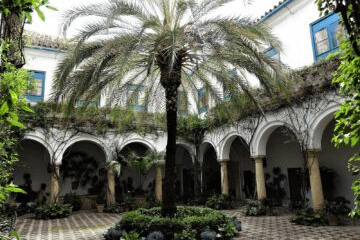
Living from the Heart
Hello Friends,
As close to 2 billion Muslims are part of the energy of Ramadan this month, I found myself drawn during this special time to the poetry of Ibn Arabi. Muhyiddin Ibn Arabi was known to Sufis as the Great Sheikh or The Red Sulphur; a rare thing during the time he lived and taught. He was born in Andalusia in the month of Ramadan in 588 (Islamic calendar) or 1164 AD and we know him as a Sufi scholar, a poet and philosopher. We do not know exactly how many works Ibn Arabi produced but it’s believed that he had at least 350, filling thousands of pages in Arabic, while living in Andalusia, Mecca, Anatolia and Damascus.
One of the motifs of the classical Arabic ‘Qasida’ or poem that Ibn Arabi used was ‘nasib’ or remembrance of the beloved. Tolerance and love were the two pillars of his poetry and he believed that the relationship with the divine is one of a parallel exchange. He saw individuals as being a mirror to the divine, a foggy mirror that could be cleared. For Ibn Arabi, the path to the divine was through the heart not the mind and in this way, one can embrace and accept the whole world:
My heart can take on any form:
a meadow for gazelles,
a cloister for monks
Ibn Arabi’s poetry connects language with music with imagery. It is a bridge between the past and the present, self and other, the Divine and the individual, life and death, the beloved and the loved. It simultaneously holds, renews and connects all these polarities together. As a Sufi scholar, he was able to arrive at a place of personal truth and from there touch upon universal truth. Regardless of whether one believes in a higher power or not or how one describes the divine, Ibn Arabi’s message is one of seeking connection with other and living from the heart.
While on one of our morning walks recently, a close friend who is also a Kundalini yoga teacher trainer and compassionate enquiry practitioner, spoke to me of the effect of the electromagnetic field of the heart and its effects on the body, the mind and beyond. What did the Sultan of Knowing (one of the names given to Ibn Arabi) understand about the heart all those centuries ago that modern medicine is discovering now?
I profess the religion of love,
wherever its caravan turns along the way,
that is the belief,
the faith I keep.
In the Arabic text of the poem, the letter ‘N’ is prevalent in the words. It’s a letter that’s spoken from the middle top section of the mouth and when repeated it begins to have a hypnotic effect. For the Sufis, the letters of the Arabic alphabet are symbols in a cosmic sense, not just linguistically, with mystical meanings. Therefore the repetition of letters to the point of a mesmerising effect creates a sacred act of chanting that reverberates into the spiritual realm. In this way, Ibn Arabi’s work is a reminder that poets are also guardians between the unseen and the seen world:
In the grove of tamarisks
spirits wrestled,
bending the limbs down over me,
passing me away.
They brought yearning,
breaking of the heart,
and other new twists of pain,
putting me through it.
Hour by hour
they circle my heart
in rapture, in love-ache,
And touch my pillars with a kiss.
At the best of creation
circled the Ka’aba,
which reason with its proofs
called unworthy,
And kissed the stones there –
and he was the Natiq!
and what is the house of stone
compared to a man or a woman?
They swore, and how often!
they’d never change – piling up vows:
she who dyes herself red with henna
is faithless.
A white blazed gazelle
is an amazing sight,
red-dye signalling,
eyelids hinting,
Pasture between breastbones
and innards.
Marvel,
a garden among the flames!
‘Gentle Now, Doves of the Thornberry and Moringa Thicket’ from The Interpreter of Desires
Translated by Michael Sells.
If you’ve enjoyed reading it, you are welcome to share it with someone who might like to join us.
Click here for link to my bio.












